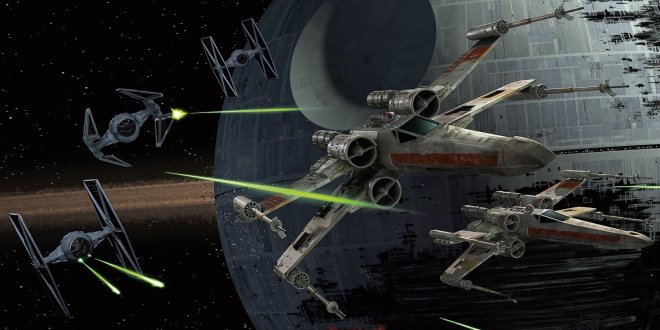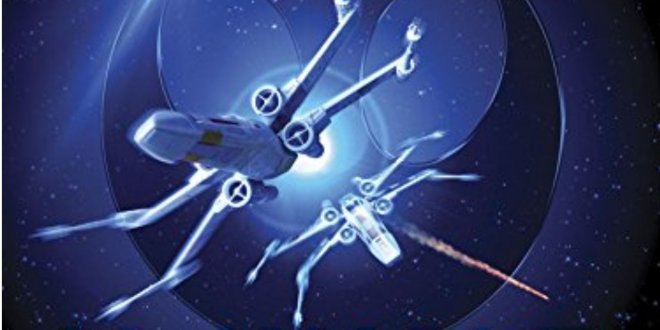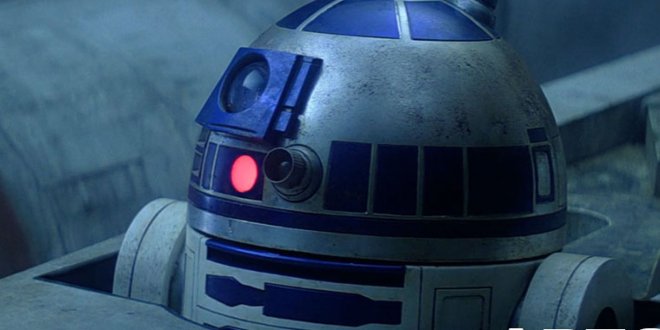
Summary
- X-wings have shields, giving rebel pilots a major advantage in battles against the Empire. TIE fighters are unshielded and more vulnerable.
- X-wings have hyperdrives, allowing for long-distance travel between star systems. TIE fighters are short-range craft and require carrier vessels.
- X-wings have astromech copilots, allowing for in-flight repairs, hyperspace navigation, and even astromechs flying the ship themselves.
The X-wing is not only one of the Star Wars franchise’s most famous starfighters, but it is also one of the key reasons why the Rebel Alliance defeated the Galactic Empire. Known as the T-65 X-wing in Star Wars Legends, the famous starfighter was initially intended to be an Imperial vessel, but the engineers of Incom Corporation unanimously joined the Rebellion. Following the Alliance’s successful theft of X-wing prototypes on Fresia, the ship became the primary rebel fighter craft. In the current Star Wars canon, the X-wing was renamed the T-65B, and it combines traits from the ARC-170s and Z-95 Headhunters used by clone pilots during the Clone Wars.
In both Star Wars continuities, starfighters are oftentimes the deciding factor in a battle, whether it takes place in space or on a planet’s surface. The Empire’s naval vessels were demonstrably more effective than the Rebellion’s ships, but the Alliance’s military strategies typically relied more on their Starfighter Corps than their Navy. This advantage was bolstered by the sheer effectiveness and variety of starfighters, with some craft, like the B-wing, being designed specifically to counter Imperial Star Destroyers. Ultimately, the Rebellion’s X-wing was their most effective starfighter, proving invaluable to their battles against the Empire for the following six reasons.
Your browser does not support the video tag. 6 X-Wings Have Shields, Keeping Rebel Pilots Alive  One key difference between the Rebellion’s X-wings and their rival Imperial TIE starfighter variants is that X-wings carried powerful deflector shields. TIE fighters are, infamously, unshielded, and thus the Empire only allowed the top 10% of Imperial Starfighter Corps applicants to fly the vulnerable craft to ensure that their sheer skill compensated for this weakness. The rebels simply could not afford to take such risks with their pilots and thus X-wings, like most Alliance starfighters, have strong deflector shields.
One key difference between the Rebellion’s X-wings and their rival Imperial TIE starfighter variants is that X-wings carried powerful deflector shields. TIE fighters are, infamously, unshielded, and thus the Empire only allowed the top 10% of Imperial Starfighter Corps applicants to fly the vulnerable craft to ensure that their sheer skill compensated for this weakness. The rebels simply could not afford to take such risks with their pilots and thus X-wings, like most Alliance starfighters, have strong deflector shields.
As shown in the Battle of Yavin in A New Hope, X-wings can survive direct hits from the powerful L-s1 blasters used by Imperial TIE fighters. Moreover, the X-wings’ shield generators projected both ray and particle shielding, protecting the craft from projectile and energy-based weaponry. No matter how skilled Imperial TIE Pilots are, however, most TIE starfighter variants will be destroyed by a direct hit, giving the Alliance’s X-wings a major advantage in engagements.
5 X-Wings Have Hyperdrives, Allowing For Long-Distance Travel  Another major advantage that rebel X-wings have over their Imperial counterparts is their inclusion of hyperdrives. Traveling between star systems is all but impossible without hyperspace and all rebel X-wings come equipped with GBk-585 hyperdrive units, allowing them to independently travel to other star systems. Luke Skywalker uses his X-wing (named AA-589 in Legends and Red Five in the new canon) for personal missions, traveling to Dagobah after the Battle of Hoth and again following the rescue of Han Solo. Imperial TIE fighters, on the other hand, are short-range craft that cannot travel between star systems without a carrier vessel.
Another major advantage that rebel X-wings have over their Imperial counterparts is their inclusion of hyperdrives. Traveling between star systems is all but impossible without hyperspace and all rebel X-wings come equipped with GBk-585 hyperdrive units, allowing them to independently travel to other star systems. Luke Skywalker uses his X-wing (named AA-589 in Legends and Red Five in the new canon) for personal missions, traveling to Dagobah after the Battle of Hoth and again following the rescue of Han Solo. Imperial TIE fighters, on the other hand, are short-range craft that cannot travel between star systems without a carrier vessel.
While TIE fighters and TIE interceptors themselves are faster and more maneuverable than X-wings, the Imperial fighters cannot engage in long-range attacks on their own. TIEs must be ferried into battle by a carrier vessel, such as a Star Destroyer, which eliminates their potential element of surprise to a degree. X-wings, on the other hand, can enter a system, immediately go into battle, and exit a system, thanks to their hyperdrives. Unlike TIE fighters, X-wings can go on long-range missions and perform fast hit-and-run strikes on their own.
4 X-Wings Have Astromech Copilots  Although X-wings are described as “one-man fighters,” the craft actually requires a crew of two: One humanoid and one astromech droid. The astromech serves as a co-pilot, monitoring functions aboard the X-wing and performing background tasks while the craft is in flight. The X-wing’s astromech co-pilot is also essential for hyperspace travel, with the droids being pre-programmed for at least 10 jumps to hyperspace and serving as navigational computers for hyperspace travel. Astromech droids also assisted in combat, keeping track of hazards and enemy craft, and assisting the humanoid pilot in performing evasive maneuvers as well as keeping track of their targets.
Although X-wings are described as “one-man fighters,” the craft actually requires a crew of two: One humanoid and one astromech droid. The astromech serves as a co-pilot, monitoring functions aboard the X-wing and performing background tasks while the craft is in flight. The X-wing’s astromech co-pilot is also essential for hyperspace travel, with the droids being pre-programmed for at least 10 jumps to hyperspace and serving as navigational computers for hyperspace travel. Astromech droids also assisted in combat, keeping track of hazards and enemy craft, and assisting the humanoid pilot in performing evasive maneuvers as well as keeping track of their targets.





